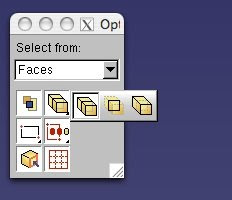One of my friends, Amanda, (dare I say
menuga) is about nine months pregnant and Tuesday they are going to induce her and have the baby. This deserves some back story because I'm really happy for her but it's kind of funny.
When I first started going to the church in Massachusetts I go to I went with a navy family. So I sat with them and didn't really talk to many other people. At the time there happened to be this girl in the choir. We didn't really talk the first year but for whatever reason we started to talk more and her mom has had me over to her house probably half a dozen times for dinners and such. While she's a year and half younger than me we are pretty much the only two in our age range at the church. There is the high school and younger group and there is the 40+ group with a few upper 20s or 30s but as far as college age that's about it.
When I talked to her the first few times she opened up with a few bold statements about wanting to have kids and get married and stuff. Not too many high schoolers talk about it like she did. It was a little scary because little kids scare me. They are so needy and fragile. Anyway, she graduated high school and went to beauty school so she could cut hair (and she's really good at it apparently). After that she worked in a beauty shop and she began to change. After working with young single moms and other experiences she was considering college for the first time and didn't want to have kids. As far as I know that's what was up as of about a year ago.
So I go away to Wisconsin and Colorado for the summer and come back in August and the first Sunday back I take my usual spot at the end of the pew only to be greeted by a very smiling face: "guess what I did this summer?"
"I have no idea, what?" I replied.
"I got married!"
You should have seen my face. In fact my whole body kind of drew back and I grabbed the pew. She had married her high school boyfriend who was/is a marine and was going to Iraq. In fact, he just got back last week and is scheduled to get out of the marines in the next few months. There had been a time crunch because he wanted to get married before he went over for his second tour.
About two weeks later in the beginning of September she did the guess what thing again. It was easy to guess pregnant that time.
Even though I only see her about a hour once a week and we only get a few minutes of talking in it has been very interesting to see her change. At first it was exciting for her because you couldn't tell she was pregnant. Then it changed to a tempered excitement as she grew and had to adjust her habits because pregnant women can't do anything but eat random foods. Finally about six weeks ago it changed to an aura of fear. With a pregnancy comes 18+ years of commitment to another human being. That's a lot of responsibility. Moral of the story: Thank you parents because there had to have been plenty of gross, sleepless, time consuming hours spent trying to do it right.











